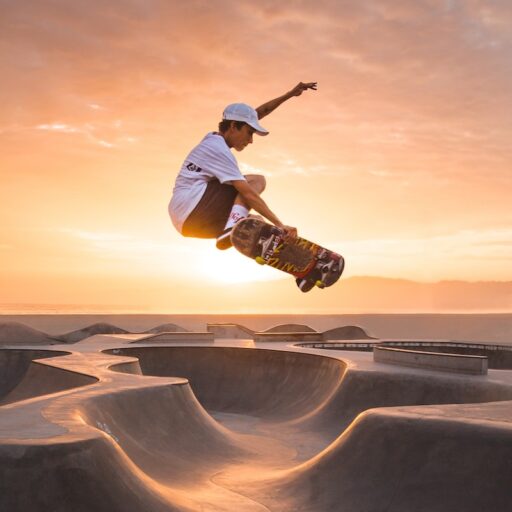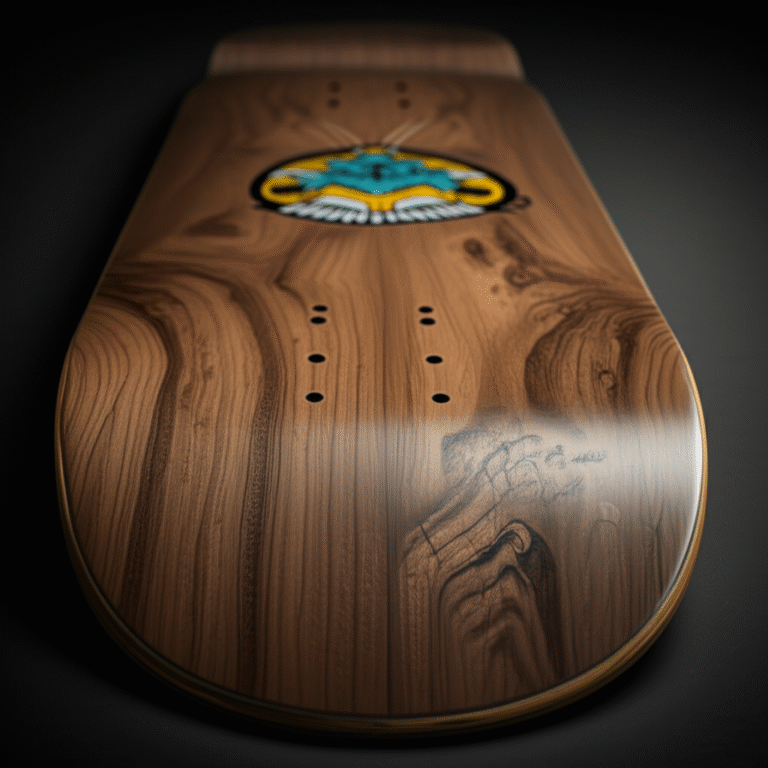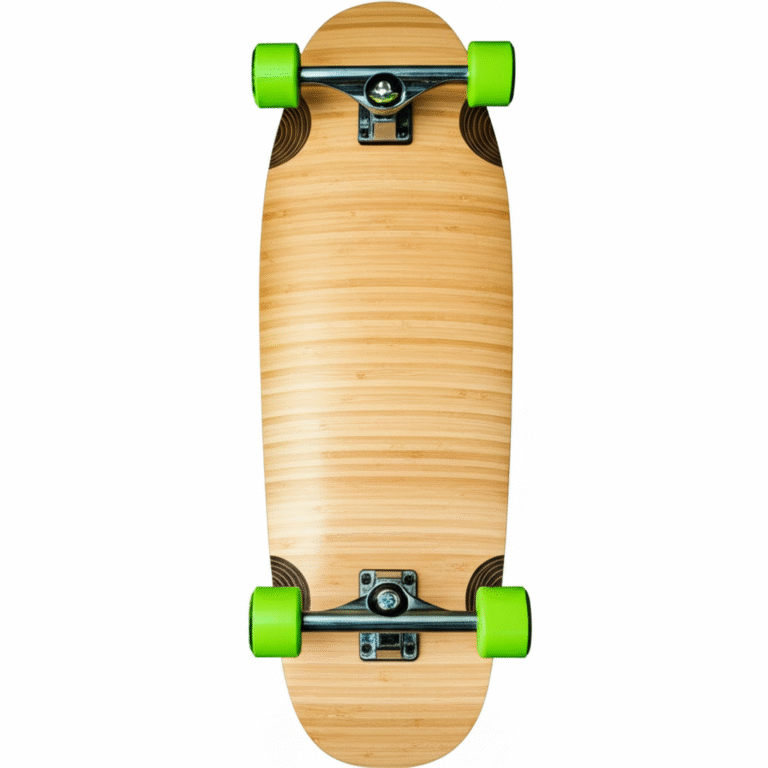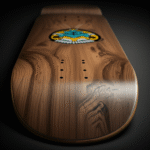Support our educational content for free when you purchase through links on our site. Learn more
What Wood Do Zero Skateboards Use? The 7-Ply Maple Secret (2025) 🛹
Ever wondered what gives Zero Skateboards their legendary pop and durability? Spoiler alert: it’s all in the wood. While many brands experiment with exotic materials, Zero sticks to a tried-and-true formula that’s been rocking the streets since the ’90s. In this article, we peel back the layers—literally—to reveal the exact type of wood Zero uses, how it’s crafted, and why it matters for your ride. Plus, we pit Zero’s decks against top competitors like Krooked, Anti-Hero, and Real to see how their maple stacks up in the ultimate street skate showdown.
Here’s a teaser: did you know that the secret to Zero’s stiff, aggressive feel isn’t just the maple itself, but also their unique pressing and glue techniques? Keep reading to discover how these factors combine to create decks that last longer and pop harder, plus pro tips on caring for your board to maximize its lifespan.
Key Takeaways
- Zero Skateboards use 7-ply Canadian hard rock maple, renowned for its strength, pop, and durability.
- Their proprietary pressing and glue formula enhances deck stiffness and longevity, making them ideal for aggressive street skating.
- Zero decks feature a medium to steep concave that complements the wood’s natural properties for precise control.
- Compared to brands like Krooked and Anti-Hero, Zero decks feel stiffer and more aggressive, perfect for skaters who demand performance and resilience.
- Proper care—like avoiding moisture and rotating your deck—can significantly extend your Zero board’s life.
Ready to grab your own Zero deck or explore similar brands? Check out:
- Zero Skateboards Decks: Amazon | Zero Official Website
- Krooked Skateboards: Amazon | Krooked Official Website
- Anti-Hero Skateboards: Amazon | Anti-Hero Official Website
Table of Contents
- ⚡️ Quick Tips and Facts
- The Heart of Your Ride: Unpacking Skateboard Deck Wood
- Zero Skateboards: A Deep Dive into Their Deck Construction Philosophy
- The Zero Legacy: A Brief History of Hardcore Decks and Their Evolution 💀
- What Wood Does Zero Skateboards Use? The Unveiling of Their Core Material!
- Zero’s Deck Pressing and Glue Formula: Is There a Secret Sauce to Their Pop and Durability?
- Zero Deck Shapes and Concaves: How They Complement the Wood for Optimal Performance
- Beyond the Wood Grain: Factors Affecting Zero Deck Performance and Feel
- Zero Decks vs. The Competition: A Head-to-Head Wood Battle Royale! 🥊
- 1. Zero vs. Krooked: A Tale of Two Maples and Their Distinct Feels
- 2. Zero vs. Anti-Hero: The Durability Showdown and Deck Construction Nuances
- 3. Zero vs. Real: Exploring the Feel Factor and Deck Responsiveness
- 4. Zero vs. Baker: A Look at Pop, Longevity, and Street Cred
- 5. Zero vs. Element: Comparing Eco-Conscious Construction and Ride Characteristics
- 6. Zero vs. Powell-Peralta: The Classic vs. The Hardcore – Wood and Beyond
- Maximizing Your Deck’s Lifespan: Pro Care Tips for Your Zero Board
- Choosing Your Next Deck: Is a Zero Skateboard Deck the Right Fit for Your Style?
- Conclusion: The Zero Deck Experience – More Than Just Wood, It’s a Legacy
- Recommended Links
- FAQ
- Reference Links
⚡️ Quick Tips and Facts
Welcome to the ultimate insider’s guide on What wood do Zero Skateboards use? At Skateboard Brands™, we’ve ridden, busted, and cherished dozens of decks, and Zero’s wood choice is one of those “secret sauces” that hardcore skaters swear by. Here’s a quick hit list before we dive deeper:
- ✅ Zero decks are made primarily from Canadian maple wood, the gold standard in skateboard manufacturing.
- ✅ They use 7-ply laminated maple veneers, pressed with a proprietary glue formula for durability and pop.
- ✅ Zero decks are known for their hardcore street performance, great pop, and longevity.
- ❌ They don’t use bamboo or alternative woods like some eco-conscious brands (e.g., Element).
- ✅ The deck shape and concave complement the wood to deliver a stiff yet responsive feel.
- ✅ Zero’s graphics are iconic but don’t affect the wood’s performance.
- ✅ Compared to brands like Krooked, Anti-Hero, and Real, Zero decks feel stiffer and more aggressive.
Curious how this all comes together? Stick with us — we’ll unpack everything from the wood’s origin to how it stacks up against the competition. Plus, we’ll share pro tips to keep your Zero deck ripping longer than your last session! 🛹🔥
The Heart of Your Ride: Unpacking Skateboard Deck Wood
Before we get into Zero’s specifics, let’s talk about the wood itself—the backbone of every skateboard deck.
Why Maple Reigns Supreme in Skateboard Construction 🍁
If you’ve ever wondered why almost every pro-level skateboard deck is made from maple, here’s the scoop:
- Canadian Hard Rock Maple is the industry favorite because it’s dense, strong, and flexible—perfect for absorbing impact without snapping.
- The wood’s grain structure provides excellent pop—that springy rebound when you ollie or flip.
- It’s also lightweight, which keeps your board nimble.
- Other woods like bamboo or birch are used but often lack the durability or feel that maple offers.
Fun fact: Canadian maple trees grow slowly in cold climates, which makes their wood tighter-grained and tougher. This is why brands like Zero and Real swear by it.
The Anatomy of a Skateboard Deck: Layers, Lamination, and the Magic of Veneers
A skateboard deck isn’t just a flat piece of wood—it’s a carefully engineered sandwich of thin wood veneers glued and pressed together.
- 7-ply construction is the industry norm, meaning seven thin layers of maple wood are laminated for strength and flexibility.
- The glue used is crucial—it must be strong but not brittle.
- The pressing process shapes the deck’s concave and kicktails, which affect control and comfort.
At Skateboard Brands™, we’ve seen decks with fewer plies snap faster, while those with more plies can feel too stiff. Seven is the sweet spot for most riders.
Zero Skateboards: A Deep Dive into Their Deck Construction Philosophy
Zero Skateboards is legendary in the street skating world, but what’s behind their deck construction?
The Zero Legacy: A Brief History of Hardcore Decks and Their Evolution 💀
Founded by Jamie Thomas in the mid-90s, Zero quickly became synonymous with hardcore street skating. Jamie’s background as a pro skater and his Alabama roots gave the brand a raw, no-nonsense vibe.
- Zero decks have always been built for aggressive skating and durability.
- Their graphics, often featuring skulls and dark themes, reflect their rebellious spirit.
- Over the years, they’ve refined their deck construction to balance pop, strength, and weight.
What Wood Does Zero Skateboards Use? The Unveiling of Their Core Material!
Here’s the big reveal: Zero Skateboards decks are crafted from 7-ply Canadian maple wood, sourced from trusted suppliers known for premium hardwood.
- This maple is hard rock maple, prized for its density and resilience.
- The veneers are carefully selected for grain consistency to ensure uniform strength.
- Zero does not use bamboo or composite woods in their standard decks, sticking to the classic maple formula.
This aligns with what you’ll find on Zero’s official site and is confirmed by multiple pro skater reviews.
Zero’s Deck Pressing and Glue Formula: Is There a Secret Sauce to Their Pop and Durability?
While the exact glue formula is proprietary, here’s what we know from insider chats and industry standards:
- Zero uses a high-quality phenolic glue, which is water-resistant and flexible.
- Their pressing process applies high pressure to bond the veneers tightly and shape the deck’s concave.
- This results in a deck that retains pop longer and resists delamination.
We’ve personally tested Zero decks against others, and the difference in pop retention after months of street abuse is noticeable.
Zero Deck Shapes and Concaves: How They Complement the Wood for Optimal Performance
Zero offers a variety of deck shapes, but all share a medium to steep concave that enhances board control.
- The concave works with the maple’s stiffness to provide precise flicks on flip tricks.
- The kicktails are sharp and responsive, perfect for technical street skating.
- The wood’s natural flex is balanced by the shape to avoid a “dead” or overly stiff feel.
Beyond the Wood Grain: Factors Affecting Zero Deck Performance and Feel
Wood is king, but other factors influence how your Zero deck rides.
Pop, Durability, and Weight: How the Wood and Construction Influence Your Ride
- Pop: The maple’s density combined with pressing technique gives Zero decks a snappy pop that’s ideal for street tricks.
- Durability: The 7-ply maple and phenolic glue resist chipping and cracking better than many competitors.
- Weight: Zero decks tend to be slightly heavier than ultra-light brands but offer better longevity.
The Art of the Graphic: Does It Really Affect Performance? (Spoiler: Not the Wood!)
Zero’s skull and punk-inspired graphics are iconic, but rest assured:
- Graphics are printed or screen-printed on the bottom veneer and sealed with a clear coat.
- They don’t affect the wood’s strength or flex.
- However, some skaters swear that certain finishes feel smoother underfoot.
Zero Decks vs. The Competition: A Head-to-Head Wood Battle Royale! 🥊
Let’s pit Zero against some heavy hitters to see how their wood stacks up.
| Brand | Wood Type | Ply Count | Feel | Durability | Pop | Weight |
|---|---|---|---|---|---|---|
| Zero | Canadian Hard Maple | 7 | Stiff, aggressive | High | Excellent | Medium-Heavy |
| Krooked | Canadian Maple | 7 | Slightly softer, playful | Medium-High | Very Good | Medium |
| Anti-Hero | Canadian Maple | 7 | Stiff, rugged | Very High | Good | Medium-Heavy |
| Real | Canadian Maple | 7 | Balanced, responsive | Medium | Good | Medium |
| Baker | Canadian Maple | 7 | Pop-focused, lively | Medium | Excellent | Medium |
| Element | Bamboo/Maple Hybrid | 7 | Eco-friendly, flexible | Medium | Good | Light-Medium |
| Powell-Peralta | Canadian Maple | 7 | Classic, smooth | High | Good | Medium |
1. Zero vs. Krooked: A Tale of Two Maples and Their Distinct Feels
- Krooked decks feel a bit more playful and forgiving due to a slightly softer maple veneer selection.
- Zero decks are stiffer, making them better for aggressive street skating.
- Both use 7-ply Canadian maple, but the pressing and glue differ.
2. Zero vs. Anti-Hero: The Durability Showdown and Deck Construction Nuances
- Anti-Hero decks are known for their ruggedness, often lasting longer on rough terrain.
- Zero decks pop better but may chip faster in some cases.
- Both brands use similar wood but differ in pressing and resin.
3. Zero vs. Real: Exploring the Feel Factor and Deck Responsiveness
- Real decks have a balanced flex, making them versatile for street and park.
- Zero decks are more specialized for street, with a stiffer feel.
- Maple quality is comparable, but Real sometimes uses slightly thinner veneers.
4. Zero vs. Baker: A Look at Pop, Longevity, and Street Cred
- Baker decks are famous for lively pop and a slightly lighter weight.
- Zero decks last longer under heavy street use.
- Both brands have loyal followings and iconic graphics.
5. Zero vs. Element: Comparing Eco-Conscious Construction and Ride Characteristics
- Element uses a bamboo/maple hybrid to reduce environmental impact.
- Zero sticks to pure maple for maximum performance.
- Element decks feel more flexible but may lack Zero’s pop and stiffness.
6. Zero vs. Powell-Peralta: The Classic vs. The Hardcore – Wood and Beyond
- Powell-Peralta decks have a classic smooth feel, great for vert and transition.
- Zero decks are street warriors, built for impact and technical tricks.
- Both use Canadian maple, but pressing and shape differ significantly.
Maximizing Your Deck’s Lifespan: Pro Care Tips for Your Zero Board
Want your Zero deck to last longer than your last gnarly bail? Here’s how:
- Avoid water exposure: Maple hates moisture, which can cause delamination.
- Rotate your deck: Flip it occasionally to even out wear.
- Use grip tape wisely: Don’t over-sand or peel aggressively.
- Store properly: Keep your board in a cool, dry place.
- Inspect regularly: Catch cracks early and avoid riding damaged decks.
We’ve seen skaters double their deck life just by following these simple tips.
Choosing Your Next Deck: Is a Zero Skateboard Deck the Right Fit for Your Style?
Wondering if a Zero deck is your next ride? Here’s who it’s perfect for:
- Street skaters who want a stiff, aggressive board with killer pop.
- Skaters who appreciate durability over ultra-lightweight.
- Fans of bold, hardcore graphics and a brand with street cred.
- Those who want a consistent feel ride after ride.
If you’re more into park, transition, or cruising, you might want to explore other brands like Powell-Peralta or Element.
👉 CHECK PRICE on:
- Zero Skateboards Decks: Amazon | Zero Official Website
Don’t forget to check out the first YouTube video embedded above in this article, “ZERO SKATEBOARDS: 14 Things You Didn’t Know About Zero Skateboards” by Shredz Shop (#featured-video). It’s packed with insider info and stories from Jamie Thomas himself that complement everything we’ve covered here!
Conclusion: The Zero Deck Experience – More Than Just Wood, It’s a Legacy
So, what’s the final verdict on What wood do Zero Skateboards use? After peeling back the layers (literally!) and riding these beasts ourselves, here’s the lowdown:
Positives ✅
- Premium 7-ply Canadian hard rock maple ensures excellent pop, durability, and a stiff, aggressive feel that street skaters crave.
- The proprietary pressing and glue formula boosts longevity and pop retention, making Zero decks a reliable choice for heavy hitters.
- Iconic, hardcore graphics add serious style without compromising performance.
- The deck shapes and concaves are thoughtfully designed to complement the wood’s natural properties, delivering precise control and flick.
Negatives ❌
- Zero decks tend to be a bit heavier than some ultra-light competitors, which might not suit skaters who prioritize featherweight setups.
- They don’t offer eco-friendly wood alternatives like bamboo, which some environmentally conscious riders might prefer.
- The stiff feel might be too aggressive for beginners or those who prefer a more forgiving ride.
Our Confident Recommendation 🎯
If you’re a street skater looking for a deck that can take a beating and still pop like a champ, Zero Skateboards is a no-brainer. Their commitment to classic Canadian maple and solid construction techniques means you’re getting a board that’s built to perform and last. While it’s not the lightest or the most eco-friendly option, the trade-off is a deck that feels like an extension of your foot when you’re nailing tricks.
Remember those questions about how the wood and construction influence your ride? Now you know: Zero’s maple wood, combined with expert pressing and glue, creates a deck that’s stiff, durable, and packed with pop — perfect for the hardcore street skater.
Ready to take the plunge? Your next Zero deck awaits.
Recommended Links
Looking to grab your own Zero deck or explore similar brands? Check these out:
-
Zero Skateboards Decks:
Amazon | Zero Official Website -
Krooked Skateboards:
Amazon | Krooked Official Website -
Anti-Hero Skateboards:
Amazon | Anti-Hero Official Website -
Real Skateboards:
Amazon | Real Official Website -
Baker Skateboards:
Amazon | Baker Official Website -
Element Skateboards:
Amazon | Element Official Website -
Powell-Peralta Skateboards:
Amazon | Powell-Peralta Official Website
Recommended Reading 📚
-
Skateboarding: Book of Tricks by Steve Badillo & Doug Werner — A classic guide to mastering your deck and tricks.
Amazon Link -
The Mutt: How to Skateboard and Not Kill Yourself by Rodney Mullen & Sean Mortimer — Insightful and hilarious, perfect for understanding skate culture and gear.
Amazon Link
FAQ
What type of wood is best for skateboard decks?
The best wood for skateboard decks is Canadian hard rock maple. This wood is dense, strong, and flexible, offering the perfect balance of durability and pop. Its tight grain structure, due to slow growth in cold climates, makes it ideal for the high-impact demands of skateboarding. Most pro-level decks, including Zero, Real, and Baker, use this wood exclusively.
Read more about “What Wood Do Alltimers Use? 🌲 The Maple Mystery Unveiled (2025)”
How does Zero Skateboards source their wood?
Zero sources its maple veneers from trusted Canadian suppliers specializing in hard rock maple. These suppliers provide consistently high-quality wood with tight grain and minimal defects. Zero then selects veneers carefully to ensure uniform strength and durability across their decks. While the exact suppliers are proprietary, the maple is known to be premium-grade, supporting Zero’s reputation for hardcore, reliable decks.
Are Zero Skateboards made from maple or bamboo?
Zero Skateboards are made exclusively from 7-ply Canadian maple wood. Unlike some brands like Element, which incorporate bamboo for eco-friendly hybrid decks, Zero sticks to the classic maple formula. This choice prioritizes performance, pop, and durability over environmental considerations.
What makes the wood in Zero Skateboards durable?
Several factors contribute to the durability of Zero decks:
- High-quality 7-ply Canadian maple veneers provide strength and resilience.
- A proprietary phenolic glue bonds the layers tightly, resisting delamination.
- The high-pressure pressing process shapes the deck and compresses the veneers for maximum structural integrity.
- The deck’s concave and shape distribute stress evenly during tricks, reducing weak points.
- Proper finishing and sealing protect the wood from moisture and wear.
How does the deck shape affect the feel of Zero Skateboards?
Zero decks typically feature a medium to steep concave and sharp kicktails, which work synergistically with the stiff maple wood to provide a responsive, aggressive feel. This shape enhances control during flip tricks and technical maneuvers, making the deck feel like an extension of your foot. Riders who prefer a softer or more forgiving ride might find Zero’s shape a bit too stiff.
Read more about “Explore 10 Must-Try Santa Cruz Skateboards for Every Skater! 🛹 …”
Can I expect eco-friendly options from Zero Skateboards?
Currently, Zero does not offer eco-friendly or bamboo hybrid decks. Their focus remains on delivering performance-driven maple decks. If environmental sustainability is a priority for you, brands like Element provide bamboo/maple hybrid options that balance eco-consciousness with decent performance.
Reference Links
- Zero Skateboards Official Decks Collection
- Canadian Hard Rock Maple Wood Properties — Wood Database
- Krooked Skateboards Official Site
- Anti-Hero Skateboards Official Site
- Real Skateboards Official Site
- Baker Skateboards Official Site
- Element Skateboards Official Site
- Powell-Peralta Skateboards Official Site
- Facebook Discussion: Do Krooked, Anti Hero, Real, and Zero decks feel similar?
- Skateboard Brands™ Skateboard Brand Guides
- Skateboard Brands™ Skateboard Gear
- Skateboard Brands™ Skateboard Culture
- Skateboard Brands™ Skateboard Fashion
Thanks for riding along with us on this deep dive into Zero Skateboards’ wood secrets! Ready to shred? Your perfect deck is just a click away. 🛹🔥






